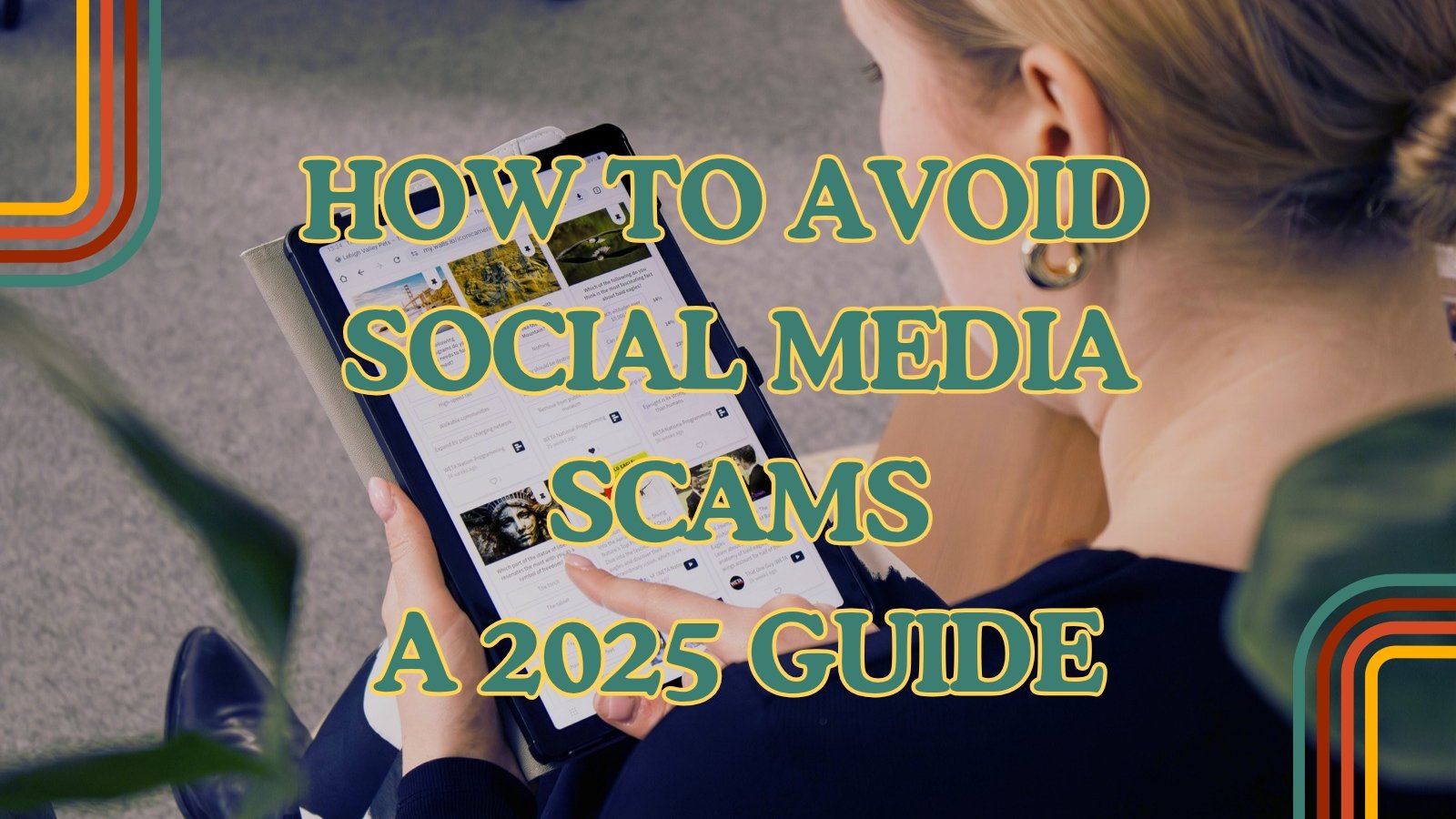TikTok is a lot of fun. It’s home to entertaining and random videos. There are dance trends, grandmoms reviewing skincare, and a man in Ohio doing DIY guides on random things, like building a backyard pool using only limited tools. But while you’re laughing, sneaky scammers are lurking, waiting for you to take the bait to steal your information and money.
The TikTok scams in 2025 are app clones, fake TikTok shops, AI call impersonators, account hacks, and romance scams. Users can avoid these scams by using strong passwords, enabling two-factor authentication (2FA), avoiding clicking on links, not oversharing personal information, and blocking suspicious accounts.
Social media scams are on the rise. Based on a GoodFirms survey, almost half of social media users have already been victimized by social media shopping scams. Plus, 60% of TikTok users encounter a scam every week, according to an F-Secure survey.
There are various scams users report on TikTok. Let’s break down the most recent ones you need to be aware of so you can prepare preventative measures.
5 TikTok Scams
1) Fake TikTok Clones

One recently reported TikTok scam is the Fake TikTok Clone. This is where scammers create fake TikTok apps that look real.
Scammers mimic everything—from TikTok’s logo to its interface. But once you download the app, it’ll install malware on your device, giving scammers access. This can result in data theft and significant financial loss.
Here are some red flags to watch out for:
- It’s not from the official platforms like Google Play or Apple App Store.
- The app is asking for unnecessary permissions (e.g., data sharing and access to your banking apps).
2) Fake TikTok Shops

TikTok is also home to one of the most used online shopping platforms. In fact, over 1 billion people shop online using TikTok. In the United States alone, 70 million people are actively shopping on TikTok.
That’s why scammers also use TikTok shopping to target many unsuspecting buyers. They often create attractive listings for products like moon-shaped LED lamps or trending gadgets. They’ll offer the product for a cheap price or with a time-sensitive discount. But when you order, you’ll either receive a knock-off (different quality from what was advertised) or nothing at all.
In other cases, scammers would require you to leave TikTok to order the product. They do this to avoid being tracked and bypass buyer protection.
Here are some signs of fake TikTok shops:
- Too-good-to-be-true prices (e.g., $3 for a smartphone)
- No reviews
- Unclear shipping details
- Sketchy URLs (e.g., “toksal3z321.biz”)
3) AI Call Impersonator

AI is now a hot topic. Some people love it because it can help make tasks easier. But for some, it’s scary. And it’s fine to be scared, because AI is getting too realistic and is being used by scammers.
On TikTok, scammers are using AI to mimic the faces and voices of the people you know, like your friends, family, coworkers, government officials, and even celebrities. Using the AI content, scammers will call you, tricking you into sharing your information or money.
Some celebrities that have been used for AI impersonation scams are Jimmy Donaldson (aka MrBeast), Tom Hanks, and Brad Pitt. As for government officials, scammers have impersonated Secretary of State Marco Rubio and White House Chief of Staff Susie Wiles.
While AI-generated content is getting more realistic, there are still red flags:
- Unnatural blinks
- Inconsistent skin texture
- Weird lighting or shadows
- Robotic or emotionless voice
- Stiff movements
- Weird payment methods (e.g., gift cards and crypto)
4) TikTok Account Hack

Several TikTok users are also reporting their accounts being hacked.
Here’s how it works:
- Step 1: Scammers send a message. They’ll pose as TikTok representatives and say that your account needs to be fixed or verified. They can also pretend as brands offering partnership, and influencers offering discount codes.
- Step 2: Scammers send a link. They’ll tell you to click the link to fix the problem or claim the code.
- Step 3: The link will direct you to a website where you’ll be required to enter your information, including your TikTok login credentials.
- Step 4: Once scammers have your credentials, they’ll access your accounts. Plus, they’ll change the password, so you won’t be able to log in.
- Step 5: Scammers will use your account to scam other people. They may also demand a ransom to give back access to your account.
That’s the overall process of the scam. Some victims recover their accounts. Some don’t, leaving them emotionally devastated, especially for those who use their TikTok account to earn money.
To avoid this scam, look for these red flags:
- Unsolicited messages
- Pressure tactics (e.g., “act now” or “limited time only!”)
- Suspicious domains (e.g., .top, .icu, and .vin)
- Requests for passwords and OTPs
- Poo grammar
5) TikTok Romance Scam

The latest TikTok scam is a romance scam.
Scammers create profiles with attractive photos, which are usually stolen from other people (especially models). Plus, scammers can use AI to generate images of attractive people. They’ll use this profile to message you.
The scammer will try to make you smitten or fall in love quickly. They’ll do this by showering you with attention, affection, and flirty messages. For example, they’ll say you’re gorgeous and they feel connected to you.
But once you’re already in love, the scammer will start asking for money. They’ll claim they have an emergency or have bought you a gift, but you have to cover the shipping fee. Since you already trust or love them, you’re likely to give them the money.
The scammer will only leave once they get everything they need or when you’ve become aware of the scam. They’ll leave you financially and emotionally damaged.
To avoid this scam, look for signs such as:
- Quick declaration of love
- Video call or meetup avoidance
- Sudden requests for money (even if you haven’t met them yet)
How to Protect Yourself

Now, does this mean you should stop using TikTok? NO!
You can still enjoy watching TikTok videos without worrying about being scammed. All you have to do is take these 5 protection steps:
- Protection 1: Use Strong Passwords: To avoid getting hacked, make sure that your TikTok account has a strong password. Make it at least 16 characters long and a mix of letters, numbers, and special characters. You can also use a password manager like Bitwarden, which can generate and store strong passwords for you.
- Protection 2: Turn On Two-Factor Authentication (2FA): For an added layer of security, use 2FA. In case your password gets compromised, scammers won’t be able to access your accounts without the second code sent through SMS or your email.
- Protection 3: Avoid Clicking Links: No matter how tempting the deal is or how urgent the “issue” is, never click links quickly. Instead, try to type in the official URL yourself. That way, you’ll know that you’re really visiting a legitimate website.
- Protection 4: Don’t Overshare: Don’t share your information with anyone so easily. Instead, trust no one and always verify. Someone is asking for your birthdate? Verify first who they are and if it’s really necessary to provide that information. Treat your information as the key to your identity and accounts.
- Protection 5: Report and Block: If you think that an account is from a scammer, report them immediately. Tap the profile, click the share button, choose Report, and then click Report Account. You can select “Pretending to Be Someone” as the reason for reporting. When you report, TikTok will take action, which will increase the chances of stopping scammers. After that, you can block the account, so you won’t be targeted anymore.
Conclusion
In summary, TikTok is a wonderful platform for entertainment. But it’s also become a platform scammers use. So, beware of scams.
As you scroll and laugh, keep an eye out for the red flags. If there’s even just one sign that a video or an account is a scam, report it immediately.
Frequently Asked Questions
What are the common scams today?
According to the Attorney General of Texas, the latest scams are: 1) advance fee scams, 2) tech support scams, 3) emergency scams, 4) phishing, 5) government imposter scams, 6) fake debts, 7) fake checks, and 8) foreign money exchange scams.
How can you stop getting targeted by scammers?
The best way to stop receiving scams is by removing your information from the internet. That includes your name, address, phone numbers, and any other data that will help scammers contact you. It’s also ideal to sign up for the FTC’s Do Not Call Registry, which will limit robocall scams.




